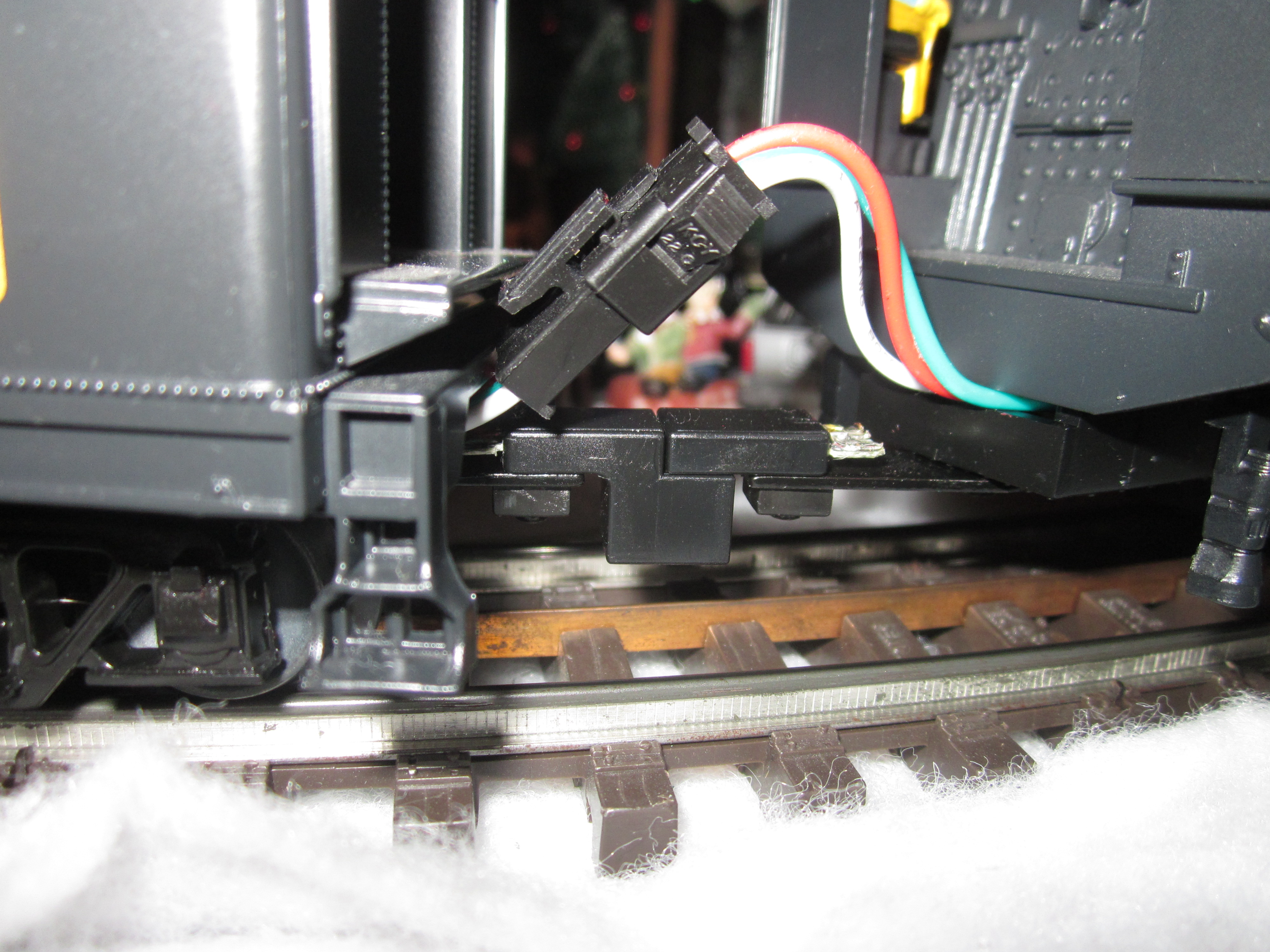Have been having problems with a LionChief 0-8-0 steam engine stalling for a short distance through FasTrack O36 manual switches. I have seen some posts on this but am looking for more ideas. This is on a museum layout that children operate. If the train is going fast enough, its inertia does carry it through of course. Also, a member worked a little on loosening and/or tightening mounting screws which helped but did not completely solve.
The root problem seems to be that, by design and necessity, there is dead ground rail through the frog area and the engine, for a short distance, is dependent on ground pick up from only one side on the outside rail. The three wheels without the traction tire seem to all be lifted above the rail not making contact.
Here is a photo that more or less shows this problem on a switch. In this case, the traction tire was swelled up and I believed replacing it would solve the problem.
I replaced the traction tire with a proper one for the 0-8-0 and still had the problem, although it was better. The engine was dead for only about an inch of travel. I then replaced the traction tire with one designed for the smaller diameter of a diesel so it would stretch to be thinner. This made a slight further improvement, but it still stalled at slow speeds.
This photo shows the three traction tires and the diesel one is very slightly less protruding than the proper 0-8-0 tire and doesn't hardly protrude at all.
I have looked up keep alive schemes on the forum but didn't find one that was "on point" for a LionChief engine. And I have never been able to find a schematic. However, since the layout is being powered by DC (via a LionChief WallPack), I suppose a keep alive could simply be put between track power pickup and the electronics without having to figure out how to insert it IN to the electronics.
I also saw a suggestion about switching drivers which, I suppose, would be switching the front and rear drivers. The front axle has the cam operating a push rod for smoke chuff. But we don't use smoke so that would not matter. We could switch drivers and just toss the push rod.
However, since this is for a museum layout, and I might not always be around to fuss with engines (such as when they get a replacement engine) I would like to find a solution that did not require mods to the engine. So that circles back to how to modify or fix track to get things reliable.
So, any further ideas for track changes, or even more ideas for engine changes, would be appreciated.



